Jean-Michel Basquiat’s LA-made work goes on show at Gagosian
‘Made on Market Street’ at Gagosian in Beverly Hills is the first show to present works made by the young artist between 1982 and 1984

The story of Jean-Michel Basquiat’s soaring success, from subway graffiti to posh galleries in five years, is rooted in the mythologies of early 1980s New York. Since his 1988 death of a heroin overdose, age 27, Basquiat films, books and auction prices (along with exhibitions such as last year’s ‘Basquiat x Warhol. Painting 4 Hands’ at the Fondation Louis Vuitton) have only multiplied, yet one perspective has not been documented until now: the formative time he spent in Los Angeles.
‘Made on Market Street’ at Gagosian in Beverly Hills is the first show to present works made by the young artist between 1982 and 1984 when he worked for extensive periods of time at a studio in Larry Gagosian’s house in Venice, California, and later at a studio down the block, both walking distance to the Pacific.
Organised by Fred Hoffman, who worked with the artist to produce a series of prints through his New City Editions in Venice and Gagosian, who gave the artist his second solo show (after his first with Annina Nosei in New York), the exhibition features an impressive 24 of the 100 paintings made during the artist’s LA sojourns as well as his drawings and prints.
Jean-Michel Basquiat: Made on Market Street at Gagosian LA
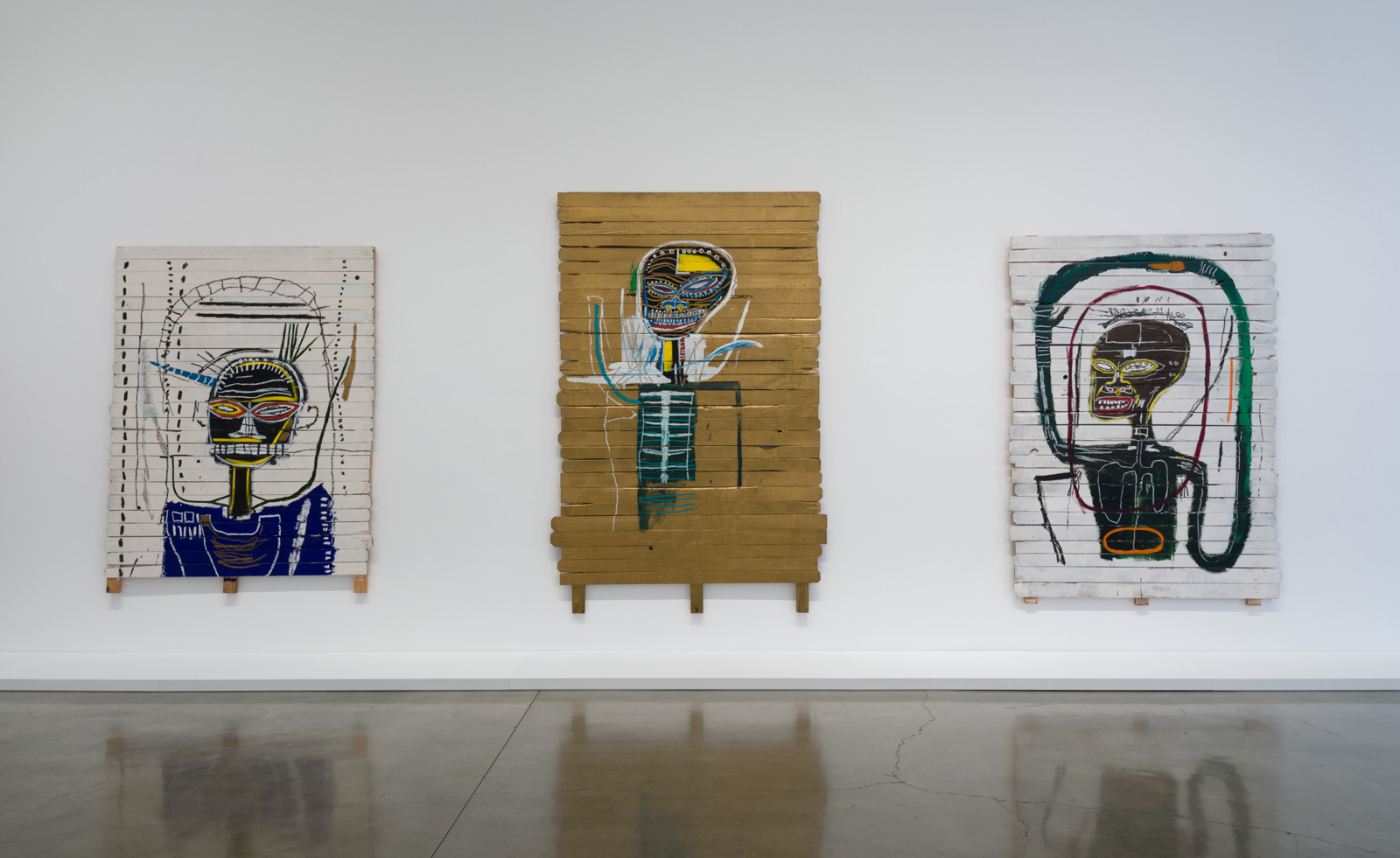
Jean-Michel Basquiat, ‘Made on Market Street’, 2024, installation view
Having invited Basquiat to come stay at his house in November of 1982, Gagosian found himself hanging out with the dynamic 22-year-old and his girlfriend, a then unknown Madonna. ‘Los Angeles has always been a great city for artists… the immensity of his talent was immediately apparent,’ Gagosian says.
The 1983 painting Hollywood Africans conveys Basquiat’s first impressions of the city with cartoon-like portraits of artists Toxic and Rammellzee taking in such sites as the star-studded sidewalk known as the Walk of Fame. All are covered in swathes of yellow paint, the sunshine of the city. It was bought by producer Doug Cramer, who later gave it to the Whitney Museum which loaned it back to LA for the show.
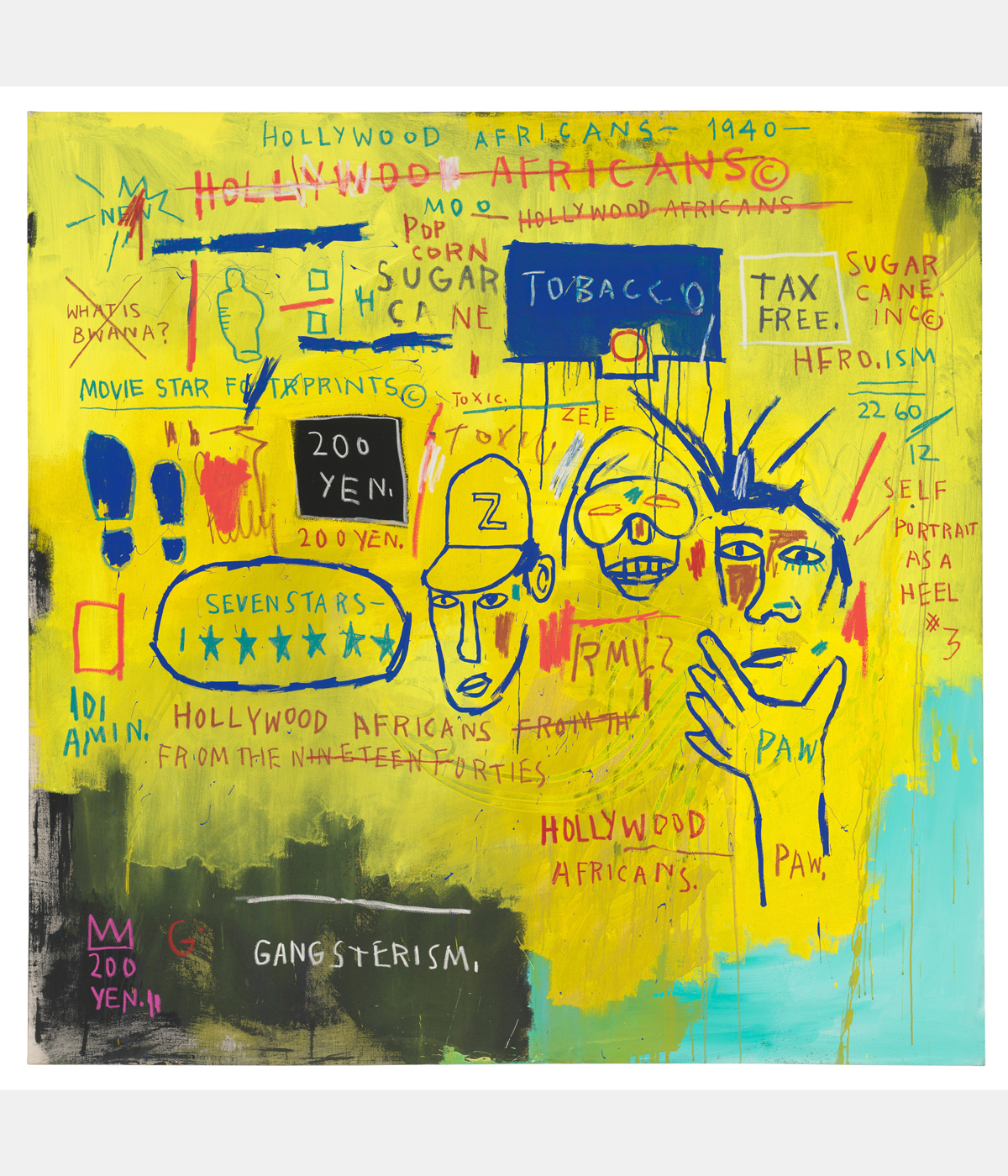
Jean-Michel Basquiat, Hollywood Africans, 1983. Acrylic and oil stick on canvas
Hoffman helped Basquiat translate his spontaneous methods of combining drawing, collage and painting to make large-scale prints including the 1983 Tuxedo. The artist used a photographic transfer to ensure that the silkscreen of his original would be printed in reverse so that the colour black was dominant, especially at nine by five feet. A white crown tops lists of complex writings and upward-pointing arrows. ‘Basquiat’s aesthetic decisions were his means of questioning certain social and cultural assumptions, with identity most important among them,’ writes Hoffman in the exhibition catalogue.
Hoffman also introduced Basquiat to Robert Rauschenberg who was working at Gemini GEL, the publisher that regularly brought renowned East Coast artists west to make prints and multiples. Basquiat looked to Rauschenberg as an artist who had influenced his own use of wooden doors and detritus in his paintings.
Receive our daily digest of inspiration, escapism and design stories from around the world direct to your inbox.
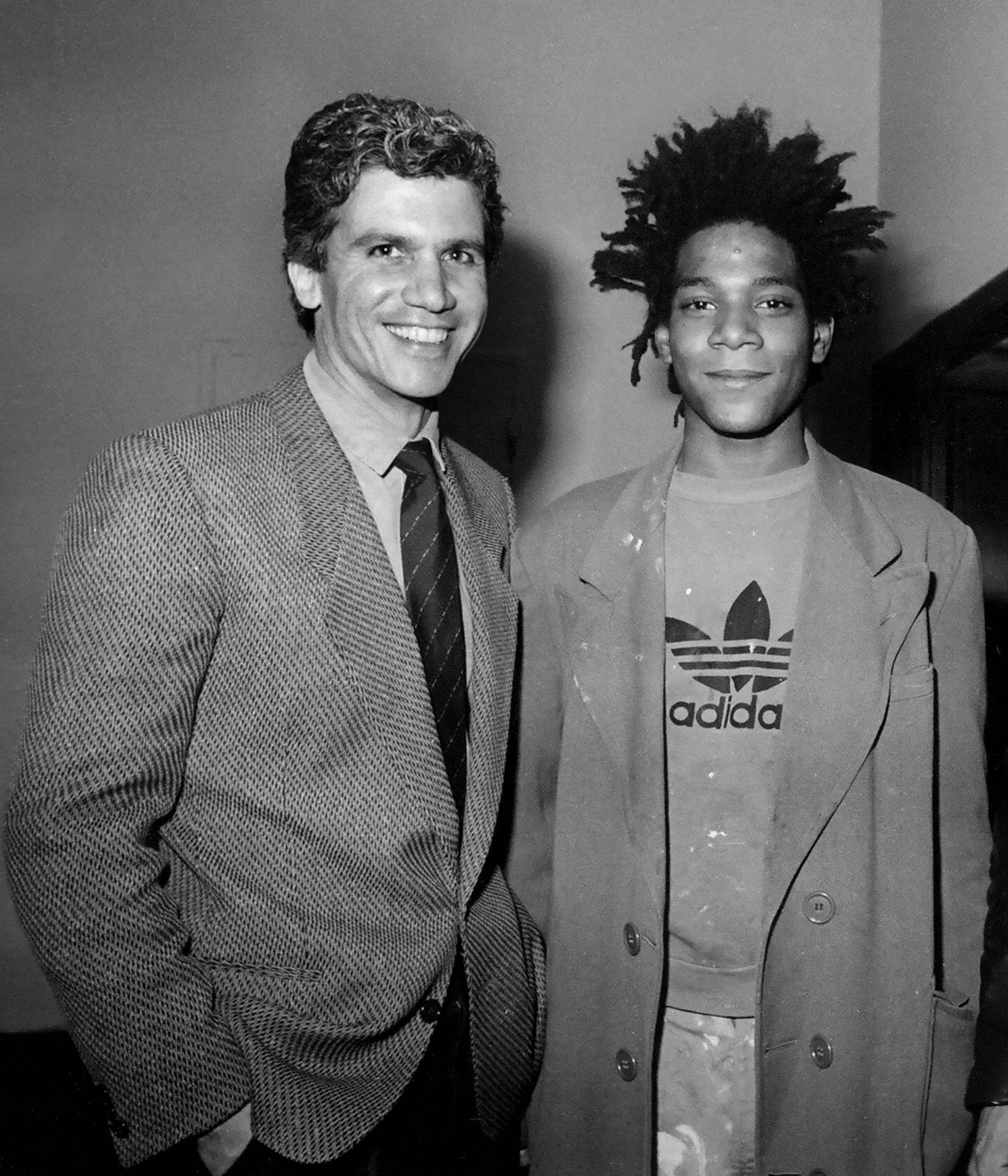
Larry Gagosian and Jean-Michel Basquiat c. 1982
On his second trip to LA, Basquiat had an old fence behind his Venice studio removed and used the wood slats as support for a trio of paintings depicting grinning African royals. They are brought together for the first time since they were made. For Gold Griot, the wood was slathered with luminous gold paint. It was bought out of the studio by Eli and Edye Broad. It is now one of 13 Basquiats in their eponymous LA Broad museum, and another of the museum loans to this exhibition.
Coincidentally, Basquiat is the big draw at Luna Luna, an amusement park originally created by artists in 1987 in Hamburg and now resurrected by the musician Drake in downtown LA. Originally, artist André Heller had invited a grab bag of big-name artists to make rides or attractions for children. David Hockney and Salvador Dalí, hipsters Keith Haring and Kenny Scharf all made pieces but the biggest star is Basquiat. A white ferris wheel was decorated by Basquiat with his incisive, sexually charged, irreverent paintings and poetic texts. One of the last works of his short career, it spins around to the tune ‘Tutu’ by Miles Davis, one of Basquiat’s idols.
‘Made on Market Street’ is on show at Gagosian LA until 1 June 2024
-
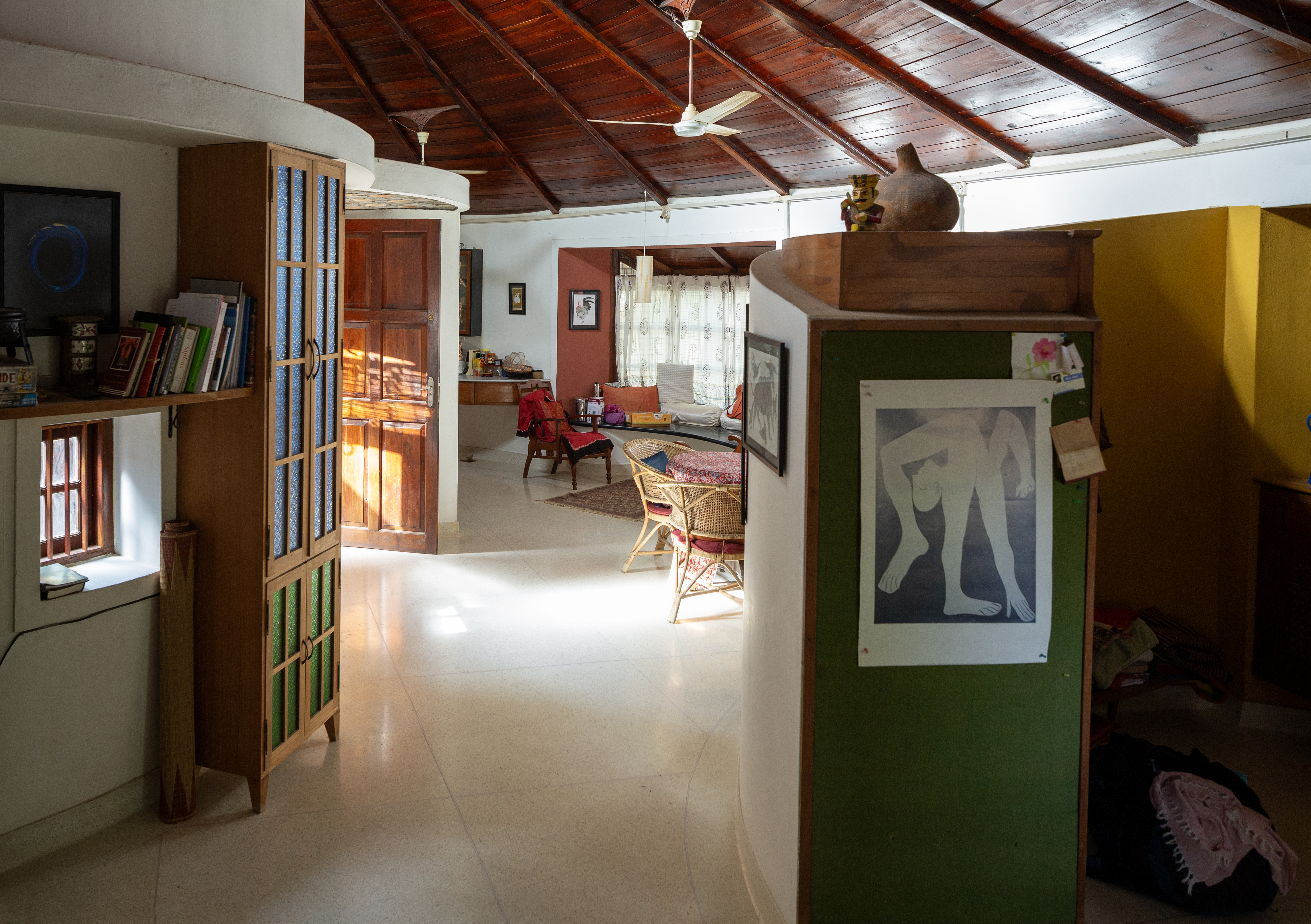 Inside a creative couple's magical, circular Indian home, 'like a fruit'
Inside a creative couple's magical, circular Indian home, 'like a fruit'We paid a visit to architect Sandeep Virmani and social activist Sushma Iyengar at their circular home in Bhuj, India; architect, writer and photographer Nipun Prabhakar tells the story
-
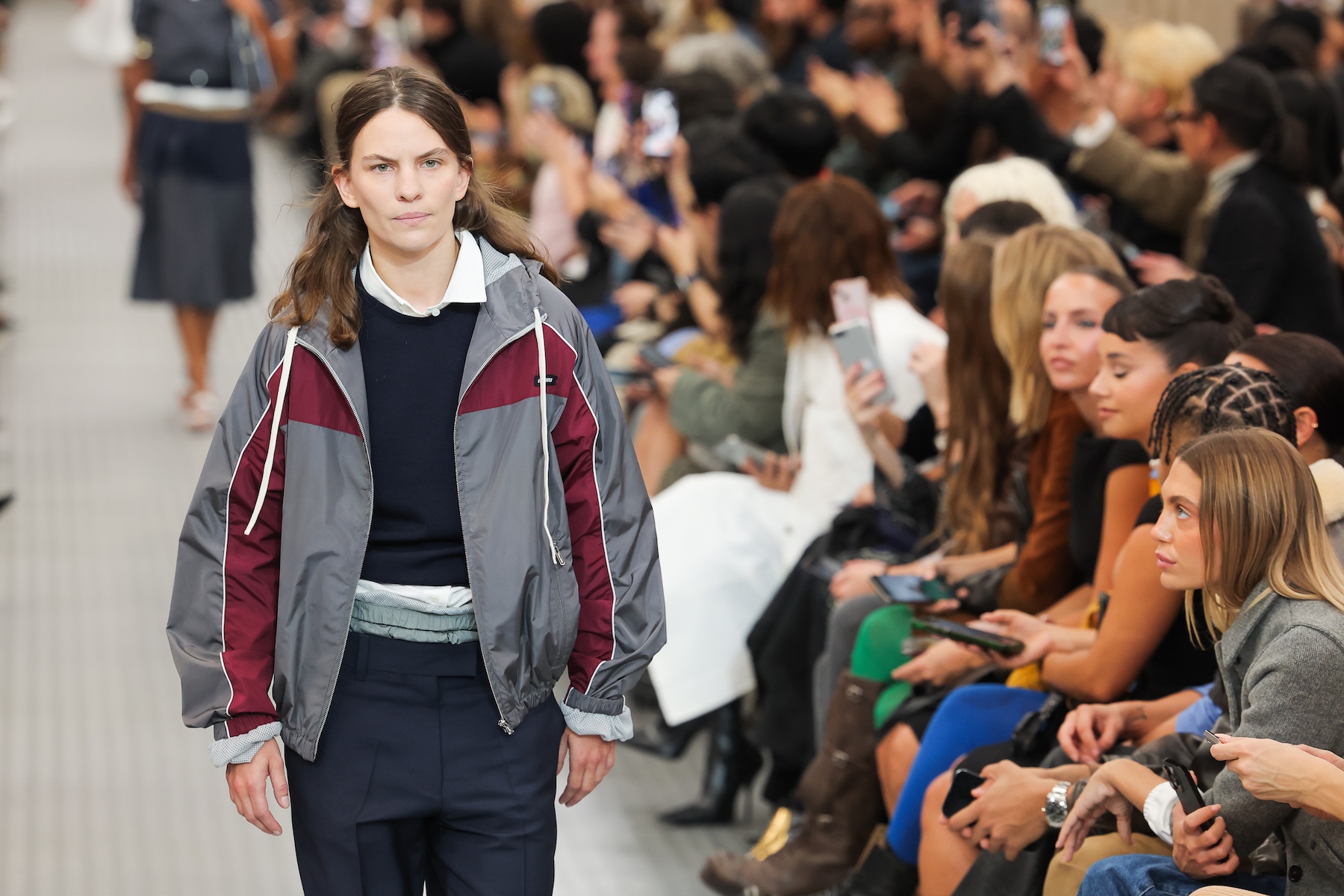 Ten of the best track jackets for channelling a 1970s-meets-1990s cool
Ten of the best track jackets for channelling a 1970s-meets-1990s coolAs a ‘Marty Supreme’ track jacket makes a bid for viral garment of 2025 – thanks to one Timothée Chalamet – the Wallpaper* style team selects ten of the best tracksuit and coach jackets for men and women, each encapsulating an easy, nostalgia-tinged elegance
-
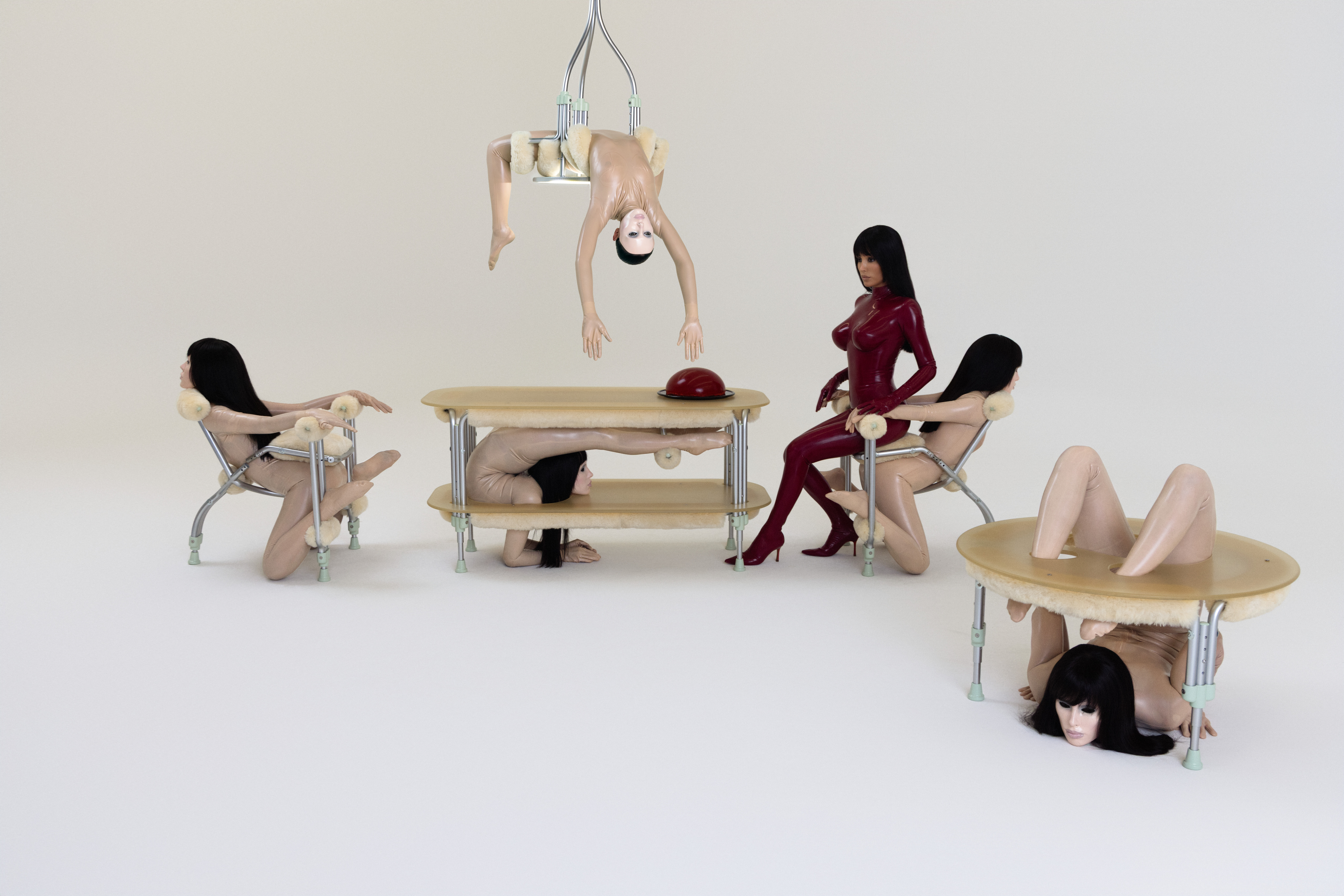 Eight questions for Bianca Censori, as she unveils her debut performance
Eight questions for Bianca Censori, as she unveils her debut performanceBianca Censori has presented her first exhibition and performance, BIO POP, in Seoul, South Korea
-
 The Hammer Museum in Los Angeles launches the seventh iteration of its highly anticipated artist biennial
The Hammer Museum in Los Angeles launches the seventh iteration of its highly anticipated artist biennialOne of the gallery's flagship exhibitions, Made in LA showcases the breadth and depth of the city's contemporary art scene
-
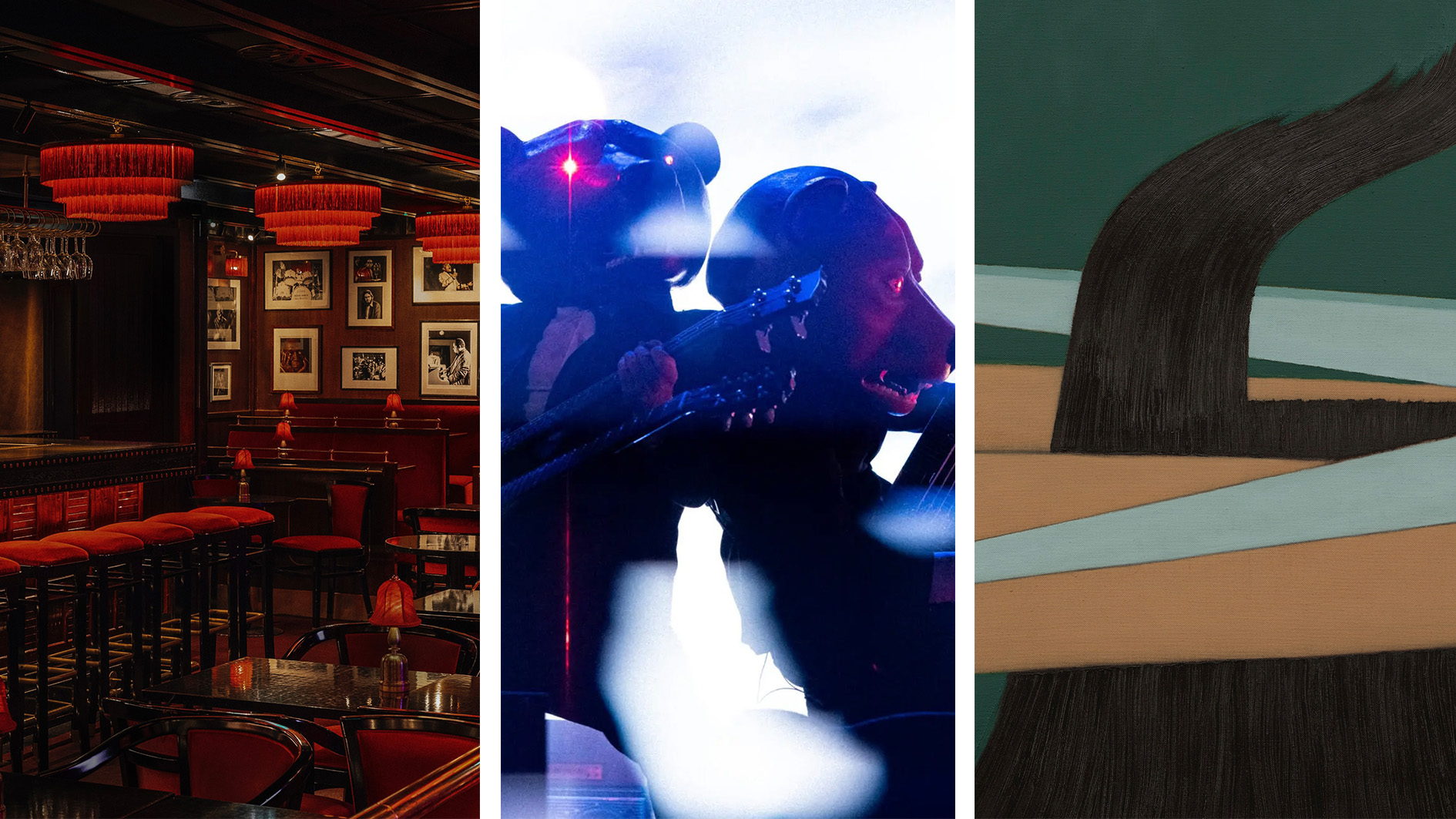 Out of office: the Wallpaper* editors’ picks of the week
Out of office: the Wallpaper* editors’ picks of the weekAnother week, another flurry of events, opening and excursions showcasing the best of culture and entertainment at home and abroad. Catch our editors at Scandi festivals, iconic jazz clubs, and running the length of Manhattan…
-
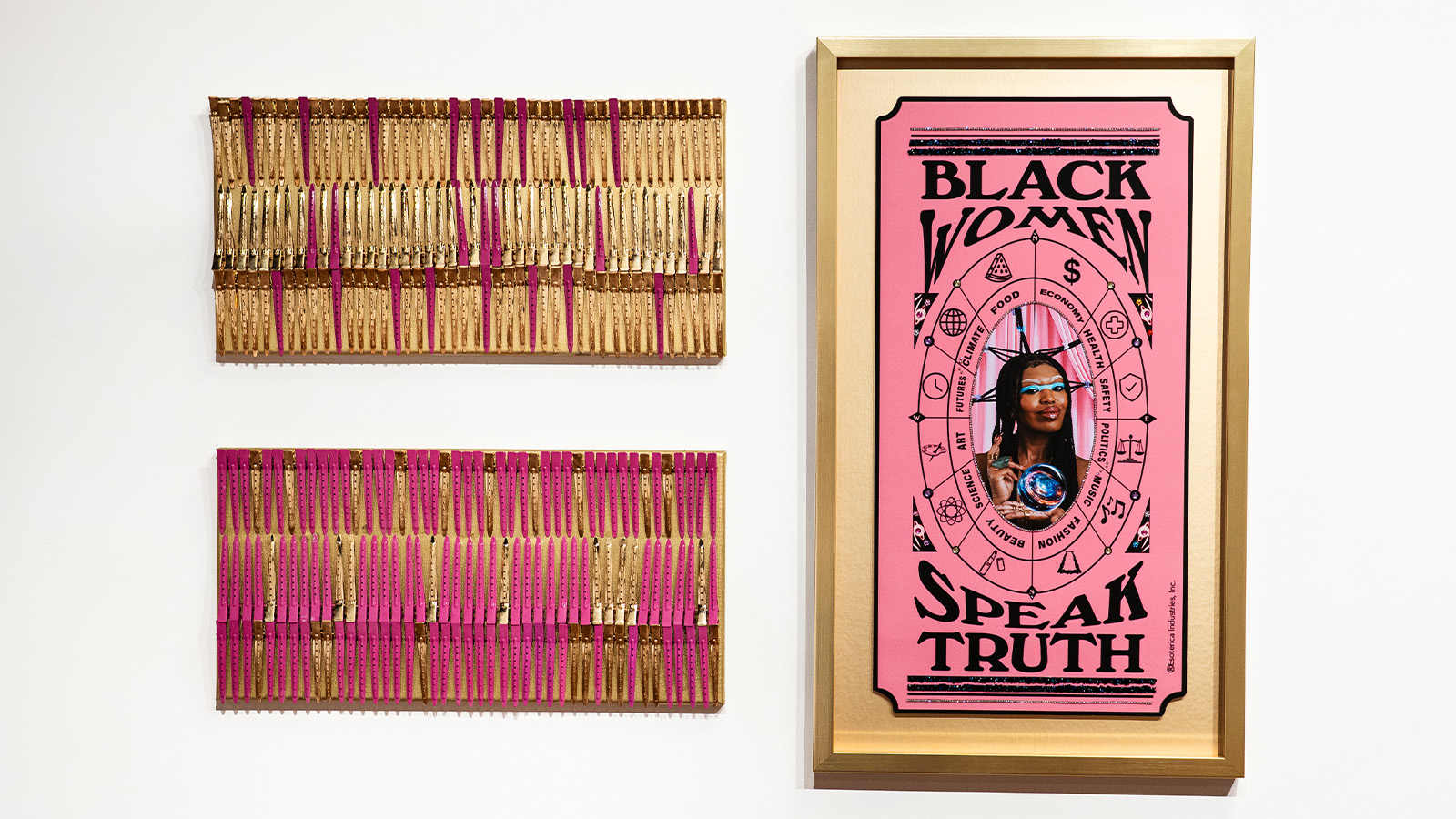 The spread of Butter: the Black-owned art fair where artists see all the profits
The spread of Butter: the Black-owned art fair where artists see all the profitsThe Indianapolis-based art fair is known for bringing Black art to the forefront. As it ventures out of state to make its Los Angeles debut, we speak with founders Mali and Alan Bacon to find out more
-
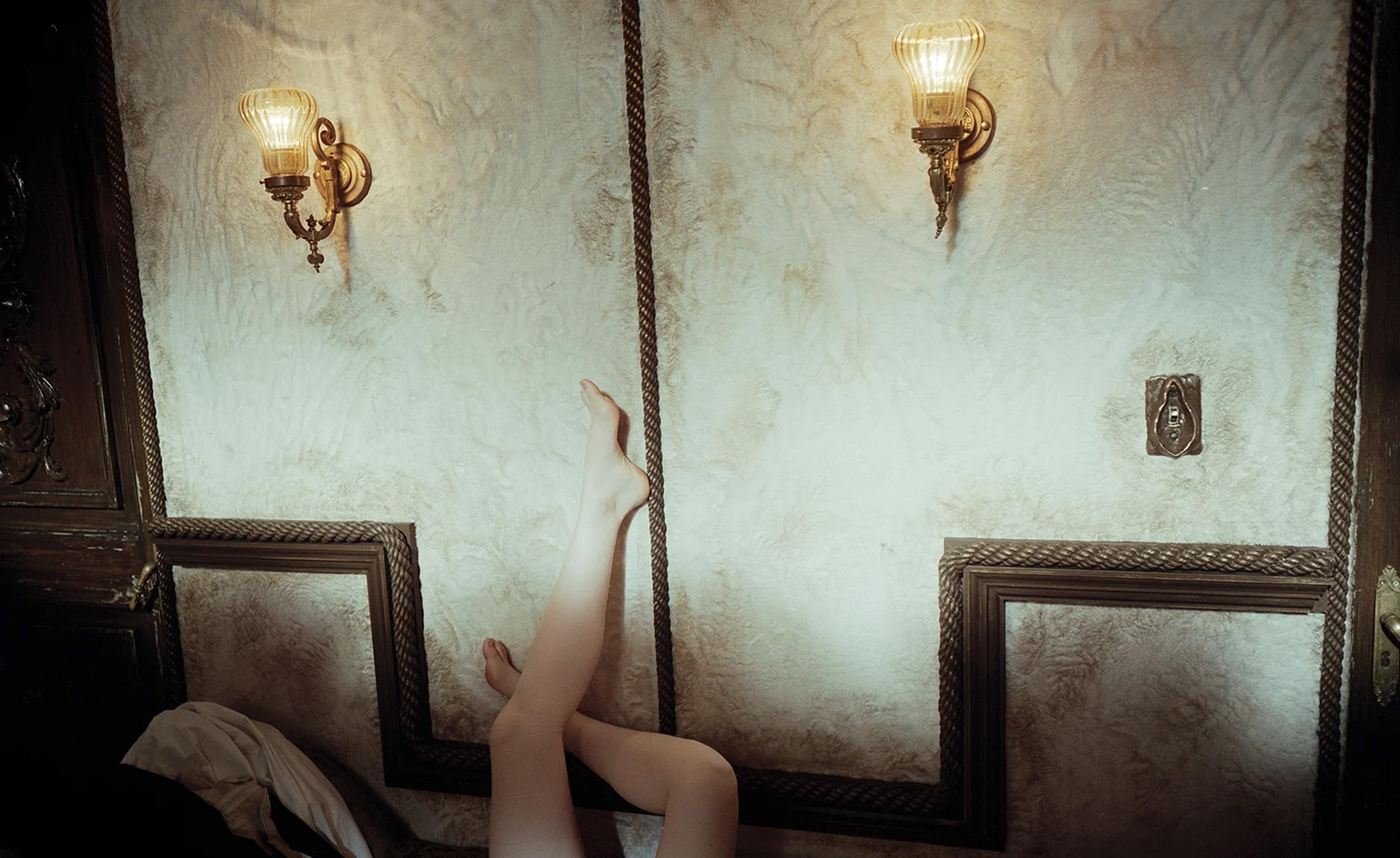 Unlike the gloriously grotesque imagery in his films, Yorgos Lanthimos’ photographs are quietly beautiful
Unlike the gloriously grotesque imagery in his films, Yorgos Lanthimos’ photographs are quietly beautifulAn exhibition at Webber Gallery in Los Angeles presents Yorgos Lanthimos’ photography
-
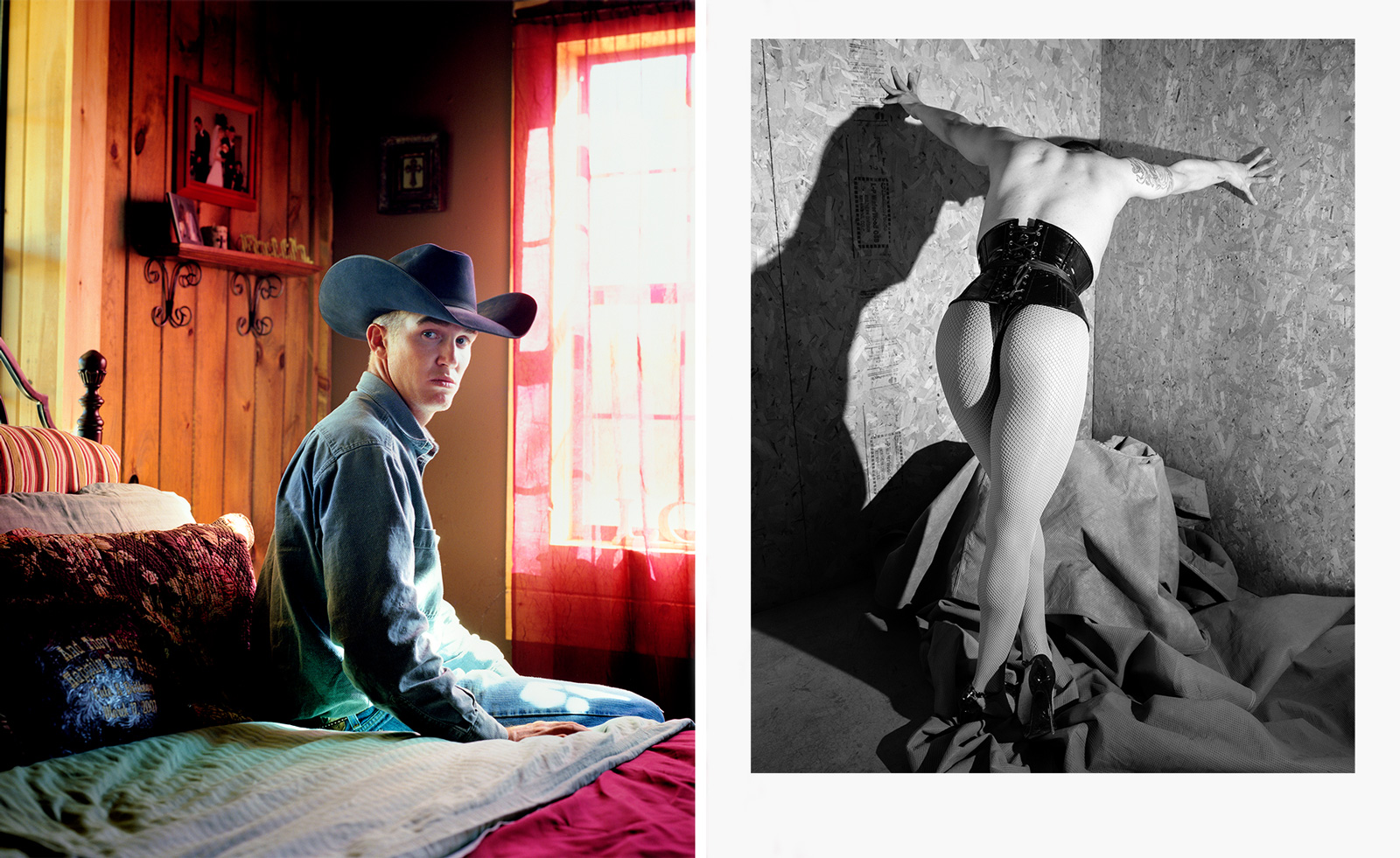 Cowboys and Queens: Jane Hilton's celebration of culture on the fringes
Cowboys and Queens: Jane Hilton's celebration of culture on the fringesPhotographer Jane Hilton captures cowboy and drag queen culture for a new exhibition and book
-
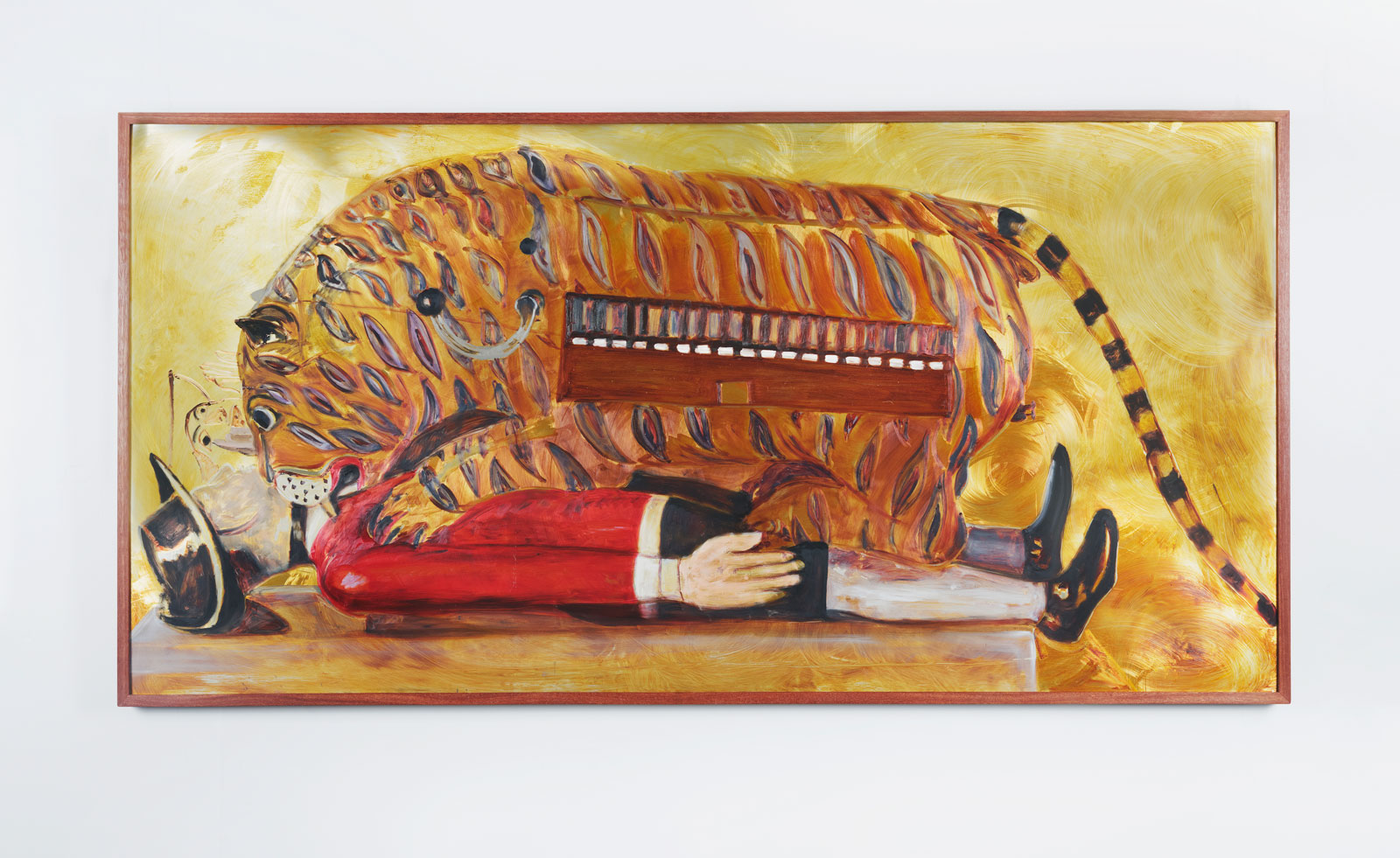 New gallery Rajiv Menon Contemporary brings contemporary South Asian and diasporic art to Los Angeles
New gallery Rajiv Menon Contemporary brings contemporary South Asian and diasporic art to Los Angeles'Exhibitionism', the inaugural showcase at Rajiv Menon Contemporary gallery in Hollywood, examines the boundaries of intimacy
-
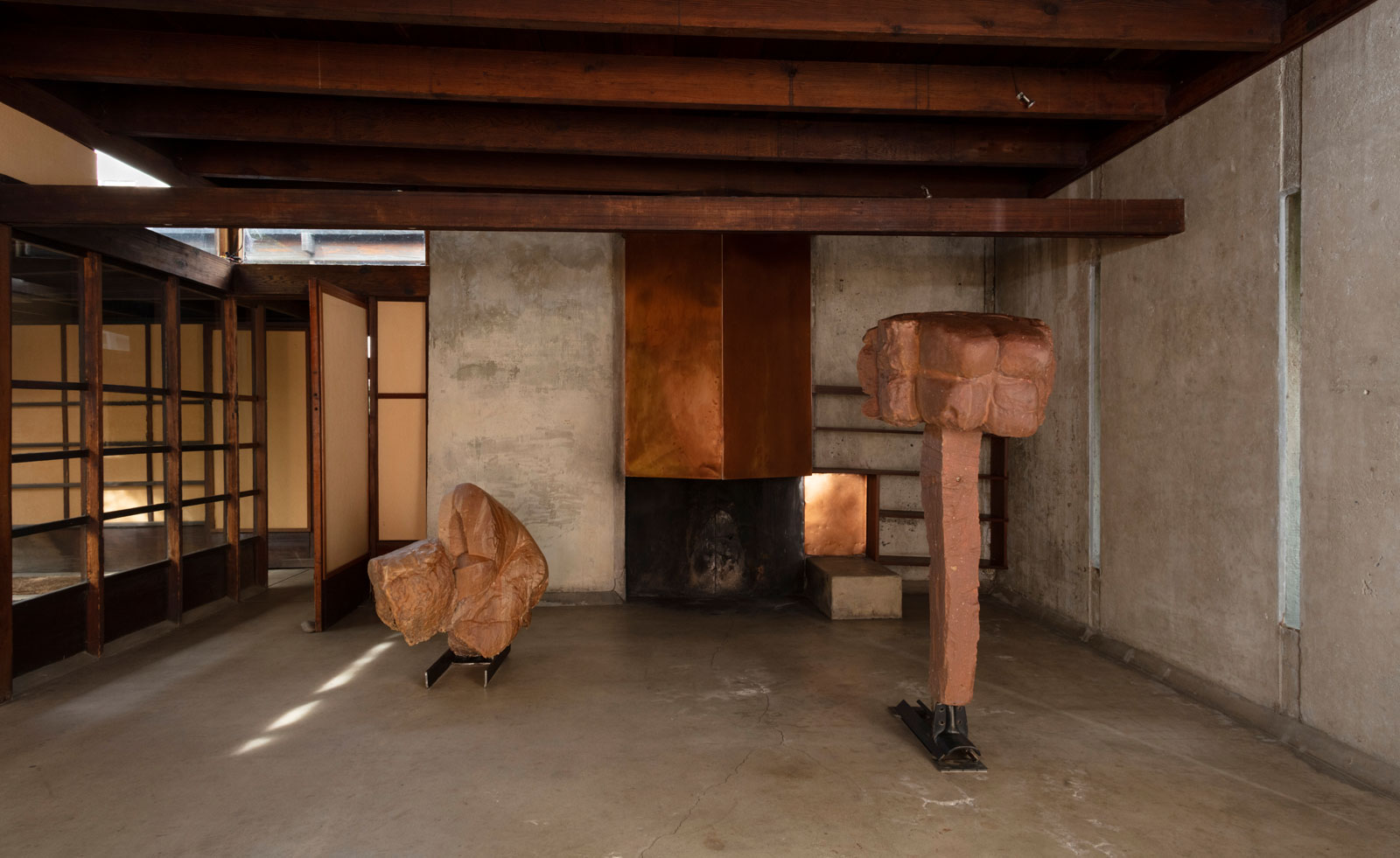 Helmut Lang showcases his provocative sculptures in a modernist Los Angeles home
Helmut Lang showcases his provocative sculptures in a modernist Los Angeles home‘Helmut Lang: What remains behind’ sees the artist and former fashion designer open a new show of works at MAK Center for Art and Architecture at the Schindler House
-
 Don't miss these seven artists at Frieze Los Angeles
Don't miss these seven artists at Frieze Los AngelesFrieze LA returns for its sixth edition, running 20-23 February, showcasing over 100 galleries from more than 20 countries, as well as local staples featuring the city’s leading creatives